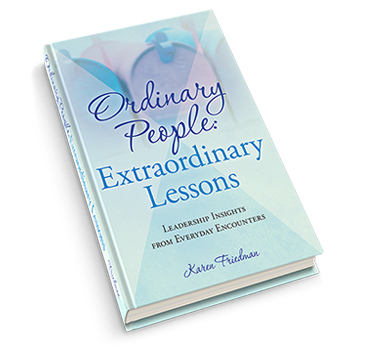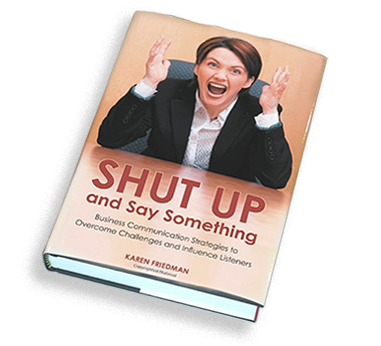If you’re like me, you probably hate political ads. There are the people who claim, if elected, they will solve all your problems. Others blame their opponents for the world’s ills. Then there are the special interest groups that raise tons of money to tell you why their message is the right one. Are these messages real or is fake?
Many years ago, I ran for political office and had a front row seat to the process. I was fresh off a career as a television news reporter when a political party asked me to throw my hat in the ring. I had two things going for me:
1. I had name recognition.
2.The man who held the seat they wanted me to run for was in trouble for allegedly publicly pummeling his girlfriend.
What I didn’t know is what I didn’t know. Elected officials would call me in the middle of the night to vent about their personal life. High ranking politicians said they couldn’t support me and urged me to change my position if it didn’t agree with the party. Then came my opponent.
As the race neared an end, things were tight. So tight, that in a district favoring her party by 5 to 1 odds, pollsters thought I might win. So, days before the big vote, her campaign sent out a mailer to voters stating that unlike her, I had moved out of the district, was not really a long-time resident and didn’t fully understand the issues. Only, it was a lie or what today’s environment would label “fake news”. I did attend college a few hours away and then earned my stripes as a journalist in a couple of cities before coming home. I never moved out of the district. I never changed my residence and I continued to vote in the district.
Ultimately, on election day, I lost by less than three percent in absentee ballots. While disappointed at the time, looking back, I’m glad I lost. While it was a great experience and I met a lot of fabulous people from both parties, I became better at what I do today because of the people I met and the skills I developed back then.
Fake news isn’t new. When I was a television news reporter, campaigns used to plant spokespeople and naysayers at opponent’s events to get their point across. They would put out news releases that contained quotes without attribution. And then, like now, they would pay for air time to say what they wanted to say regardless of truth or fact.
It’s not just politicians who spout fake news. According to recently released reports, in the 1960’s the sugar industry paid scientists to downplay the link between sugar and heart disease to promote saturated fat as the real culprit. Credible sources now suggest that five decades of research into nutrition and heart disease as well as many of today’s dietary recommendations, may have been shaped by the sugar industry to derail the real truth that sugar was the culprit.
Like the childhood game, whisper down the lane, people would see something on the news and tell their friend who would tell their friend and so on. After it was repeated multiple times, some of the facts would be missing while others were exaggerated or flat out wrong. I recall spending days interviewing people at breaking news stories, only to hear some of my own neighbors share incorrect information about the story I covered. When I would correct them, explaining I had received information directly from the source, they would argue, insisting that what they heard was true.
Campaigns to manipulate public opinion and advance personal agendas have always been commonplace, but today’s execution is unprecedented. Researchers from Oxford University’s Computational Propaganda Research Project reported a “global inventory of organized social media manipulation”. The report found that social media propaganda was used in 29 countries to issue false news reports, attack journalists or support a government or political viewpoint. It goes on to say that in some cases, these efforts involved full-blown government bureaucracies of employees on fixed payrolls.
Mainstream media has always had a soft spot for sensationalism and some might suggest that even respected journalists manipulate information. However, in years gone by, most people got information from newspapers, radio or the evening newscast and they were typically loyal to that news source.
The difference between now and then is the reach of social media. Fake news is fast news. Social media platforms allow anyone with a phone to spread a lie around the world in seconds. In fact, research conducted by the Media Insight Project, a collaboration between the American Press Institute and The Associated Press-NORC Center for Public Affairs Research, says that people who see an article from a trusted sharer, even if it’s written by an unknown media source, have much more trust in the information than people who see the same article that appears to come from a reputable media source.
Today, because people get their news from other people, and are more likely to believe someone they trust, it’s hard to tell what’s real and what’s fake. If someone prefers FOX over CNN, they will believe FOX and the opposite is also true. As my husband frequently comments, we all live in our own bubbles. That means each of us has our own version of reality. What we believe seems more real. What others believe could be fake.
When we are quick to label someone else’s opinion or belief as fake, that’s the same as trying to shut them up. After all, if I insist you don’t know what you’re talking about and I am a trusted source, then I must be right, even if I’m not.
Like a negative demeaning political ad that shouts at you knowing you can’t respond, labeling others as fake will only promote fake conversations instead of trying to understand others and solve real problems.








Leave a Reply
You must be logged in to post a comment.